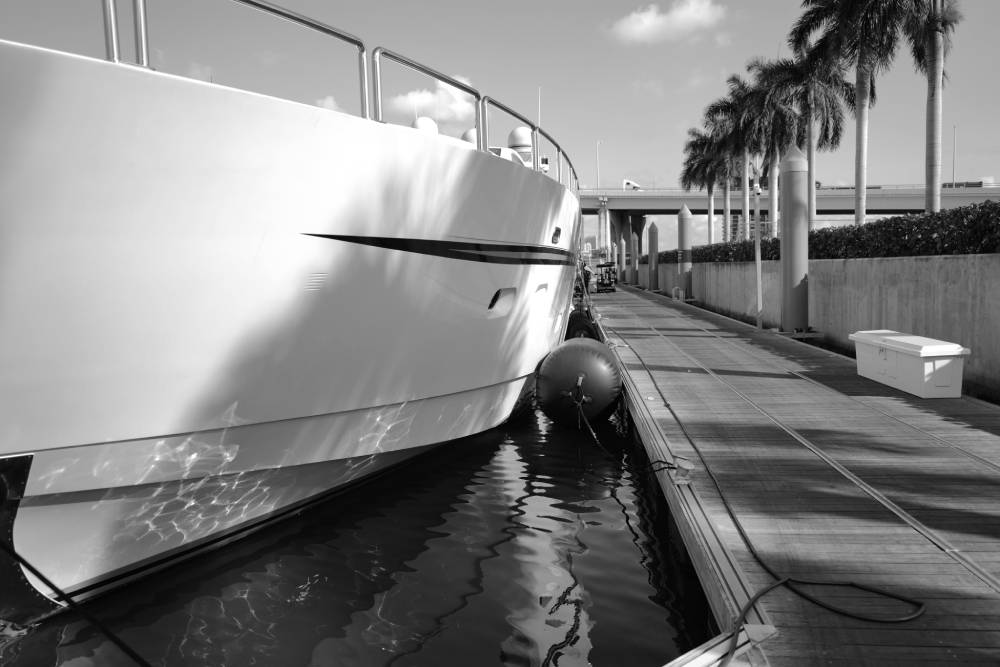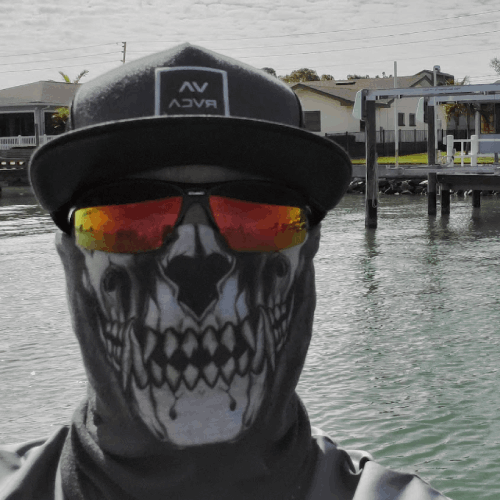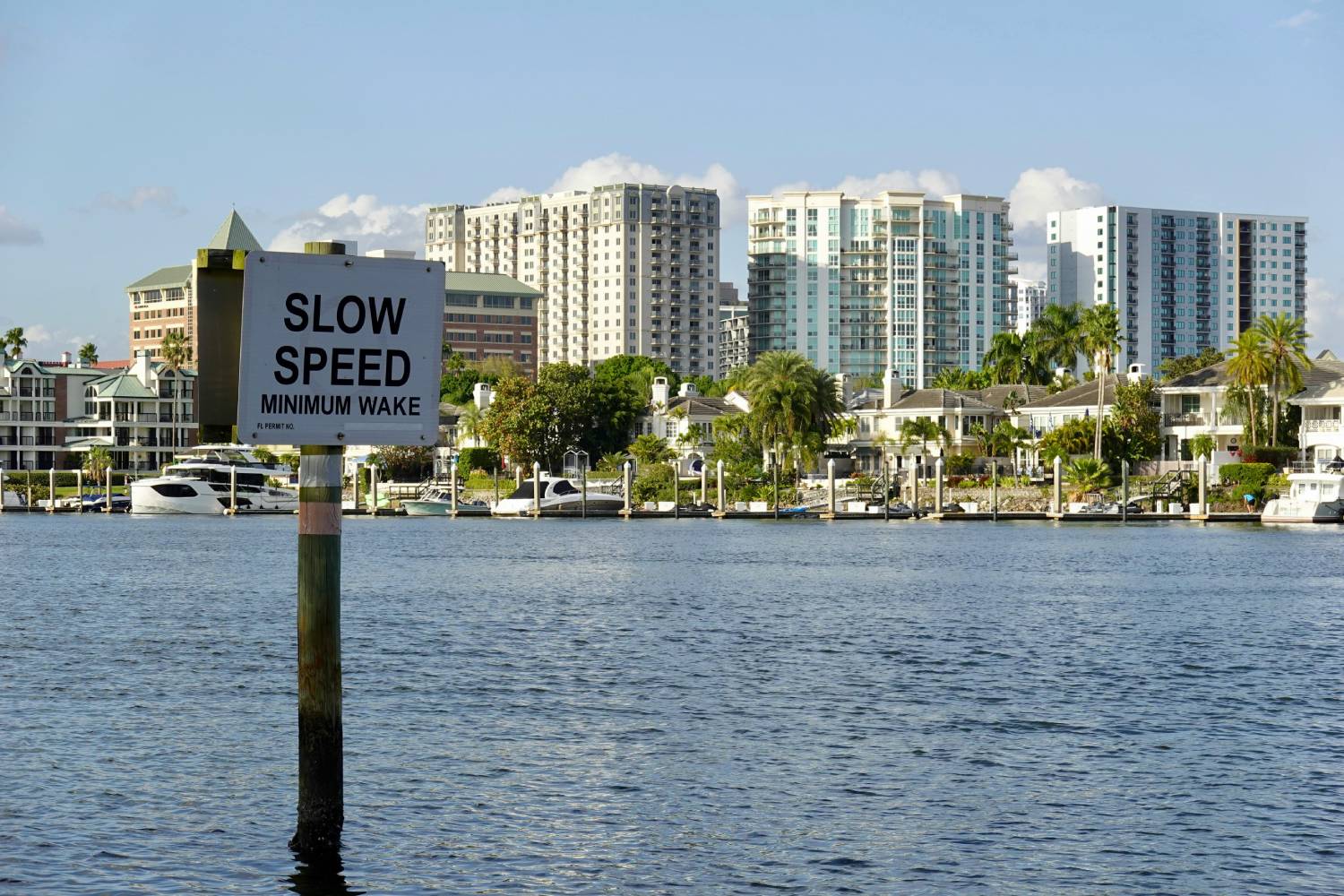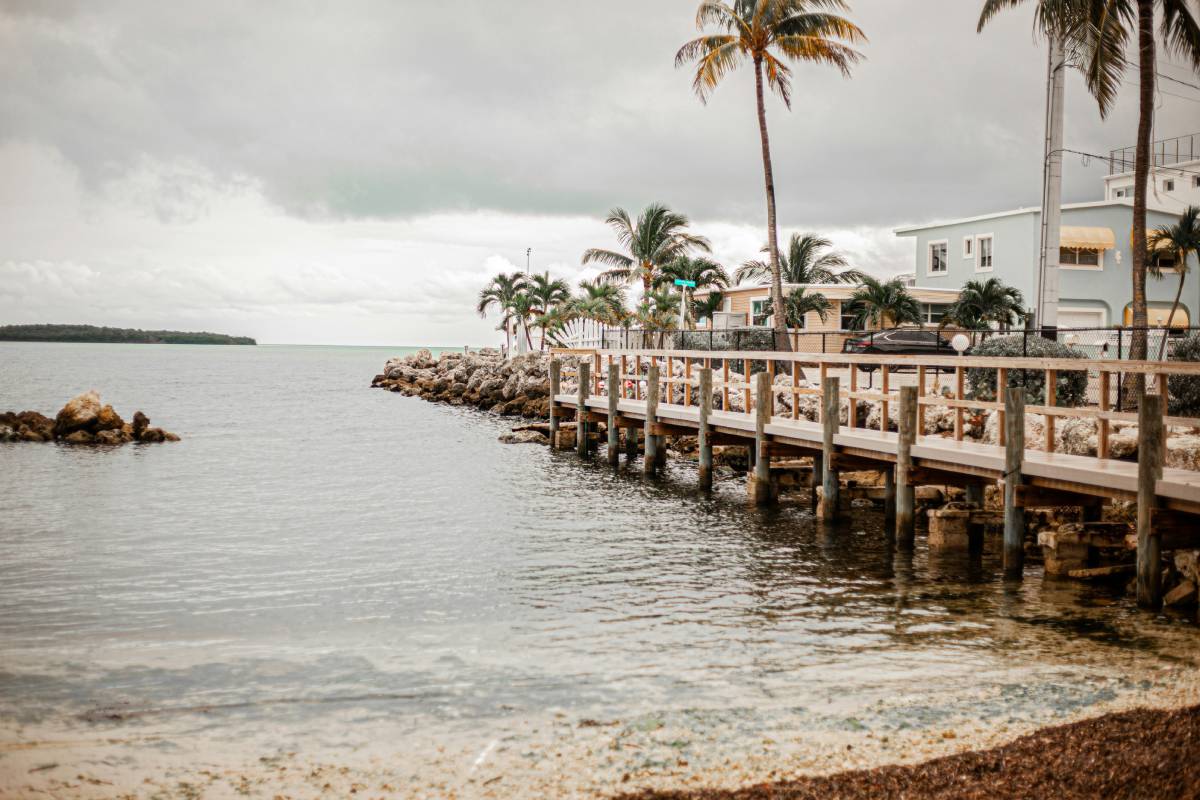

By Craig Wheeler
Wed Jun 25 2025
How to Dock a Boat Like a Pro (Checklist + Common Mistakes)
Docking a boat is one of the most nerve wracking parts of boating, even for seasoned captains. Tight spaces, changing winds, and unpredictable currents can all make it tricky. Whether you’re easing into a slip or tying up alongside a pier, there’s a lot that can go wrong if you aren’t prepared.
If you’ve ever asked yourself, “when preparing to dock your boat, what should be done?”, you’re in the right place. This comprehensive guide offers a step by step checklist, explains common mistakes, and provides expert advice to help you dock confidently like a pro. Let’s get started.
The Importance of Proper Docking Preparation
Before diving into techniques and common pitfalls, it’s important to understand why docking preparation matters. Docking isn’t just about slowing the boat and tying it off. It’s about protecting your passengers, your vessel, and other boats in the marina.
A poorly executed docking can cause damage to your hull, scrape another vessel, or even injure someone on board. Good preparation allows you to react quickly to unexpected changes, such as a sudden gust of wind or shifting current.
Even if your docking location is familiar, conditions can vary each time. That’s why having a consistent preparation routine is key. Professionals don’t rely on luck; they follow protocols.
When Preparing to Dock Your Boat, What Should Be Done?
If there’s one question that new boaters often ask, it’s this: “When preparing to dock your boat, what should be done?” The answer involves several small but crucial steps that begin well before you approach the dock.
Here’s a reliable pre docking checklist every boater should follow:
1. Reduce Your Speed Early
Start slowing down much sooner than you think is necessary. Most docking issues stem from entering too fast. Shift into neutral and let your boat coast slowly toward the dock. Idle speed gives you more control and time to adjust.
2. Brief Your Crew
Make sure everyone on board knows their role. Assign someone to handle fenders, another to manage lines, and ensure everyone is ready well before you’re close to the dock. Clear communication prevents chaos.
3. Prepare Dock Lines and Fenders
Have your lines ready and fenders in place on the correct side of the boat. This protects both your boat and the dock from impact. Position fenders just above the waterline, spaced based on the size of your boat.
4. Assess Wind and Current
Observe which direction the wind is blowing and how strong the current is. If the wind or current is pushing you away from the dock, you’ll need more power to get in position. If it’s pushing you toward the dock, approach with caution to avoid hitting it too hard.
5. Choose the Right Angle
Approach the dock at about a 20 to 30 degree angle. This gives you better control and allows you to adjust easily if you need to abort and try again.
6. Shift into Neutral Often
Shifting into neutral lets you pause and assess your position. This is particularly helpful when conditions change quickly or you’re unsure of your alignment.
Each of these steps may seem small, but together they form the foundation of a smooth docking experience.
Step by Step Docking Process for Beginners and Pros
Even with preparation, the actual act of docking requires precision and confidence. Whether you’re docking bow in, stern in, or side tie, follow these core steps:
Step 1: Approach Slowly and Deliberately
As you near the dock, steer slowly. Avoid oversteering, which can make corrections harder. Keep your hand on the throttle and be ready to shift into neutral or reverse if needed.
Step 2: Use Wind and Current to Your Advantage
If the wind or current is pushing you toward the dock, let it help you. Just keep the bow aligned and let your boat ease in. If it’s working against you, use short bursts of throttle and steering to fight drift while staying under control.
Step 3: Shift to Neutral and Glide In
Once aligned, shift to neutral and let your boat glide the final few feet. Make small adjustments with the helm to correct your course. Avoid staying in gear too long, as this can lead to sudden, hard impacts.
Step 4: Secure the Boat with Dock Lines
As soon as you’re close enough, have your crew step (not jump) onto the dock and secure the lines. Always tie the bow and stern lines first. Then add spring lines to prevent forward and backward movement.
Step 5: Double Check Fenders and Lines
After securing your boat, recheck that the fenders are still in place and the lines are properly tensioned. A little extra time now can prevent damage if the wind picks up later.
Coming up in the next sections: key mistakes to avoid, tips for tight spaces, and special considerations for various boat types.
Common Mistakes to Avoid While Docking
Even experienced boaters make errors when docking. Many of these mistakes are completely avoidable with a bit of foresight. Let’s break down the most frequent docking errors and how to steer clear of them.
Mistake 1: Approaching Too Fast
This is perhaps the most common mistake. A fast approach leaves little room for correction and often ends with a jarring impact. Always remember the golden rule: never approach the dock faster than you’re willing to hit it.
Mistake 2: Failing to Prepare Lines and Fenders in Advance
Some boaters wait until they’re just a few feet from the dock to start prepping fenders and dock lines. This last minute scramble increases the chances of mistakes and puts unnecessary pressure on the crew.
Mistake 3: Poor Communication with Crew
Docking is not a one person job. Lack of communication can lead to tangled lines, missed cleats, and even injuries. Use clear, simple commands and assign tasks before you get close to the dock.
Mistake 4: Overcorrecting the Helm
Small steering corrections are all that’s needed in close quarters. Oversteering creates zigzag movements that complicate docking, especially in narrow slips.
Mistake 5: Not Accounting for Wind and Current
Ignoring environmental factors makes docking harder than it has to be. A bit of planning based on wind and current direction goes a long way toward a smooth landing.
Mistake 6: Jumping Onto the Dock
Your crew should never leap onto the dock. It’s unsafe and unnecessary. Always wait until the boat is close enough to step off securely.
Avoiding these pitfalls requires attention, but the payoff is a docking experience that looks and feels effortless.
Tips for Docking in Tight Spaces
Tight docking spaces are one of the biggest challenges in busy marinas. Whether you’re maneuvering into a narrow slip or docking between two boats, these pro tips will help you stay in control.
Use Short Bursts of Throttle
Instead of maintaining steady power, use short, controlled bursts to maneuver. This technique provides better directional control and reduces the risk of oversteering.
Know Your Boat’s Pivot Point
Understanding how your boat pivots will improve your handling significantly. Most boats pivot near the center. Practice slow turns in open water to get a feel for how your specific boat reacts.
Make Use of Spring Lines
Spring lines allow you to pull or push the boat into position when space is limited. For instance, tying a spring line to a forward cleat and applying reverse power can help swing the stern into place.
Do a Walk Through First
If the area is particularly cramped or unfamiliar, dock your boat temporarily elsewhere and walk to inspect the space. This gives you a better sense of spacing, angles, and potential obstacles.
Abort If Necessary
Even professionals back out and try again. If your approach feels wrong, don’t force it. Shift to neutral, back out, and reset for another attempt.
Tight spots test your skill, but with patience and the right approach, they don’t have to be stressful.
Special Considerations for Different Types of Boats
Not all boats handle the same way during docking. From small fishing boats to twin engine cruisers, each vessel has its own quirks. Understanding your boat’s characteristics will help you dock more effectively.
Single Engine Boats
These boats rely more on momentum and rudder action. Docking a single engine boat requires precise control of speed and throttle. Practice using reverse to stop and steer at low speeds.
Twin Engine Boats
Twin engines offer superior control in tight quarters. By manipulating one engine forward and the other in reverse, you can pivot the boat without forward movement. This makes it easier to spin in place and align perfectly.
Sailboats
Sailboats often have deep keels and limited reverse control, which can complicate docking. It’s best to approach with caution and use spring lines to fine tune your position after the initial tie up.
Pontoon Boats
With a flat profile and plenty of windage, pontoon boats are easily pushed off course by wind. Approach with your fenders low and pay close attention to current conditions.
Inboard vs. Outboard
Outboard motors typically offer more responsive low speed steering. Inboard boats may require earlier adjustments since they don’t react as quickly when turning.
Knowing how your specific boat behaves helps you avoid surprises when docking. With enough practice, these differences become second nature.
How to Dock in a Crowded Marina Without Stress
Marinas can get hectic, especially on weekends or holidays. Add in boat traffic, limited space, and onlookers, and it’s easy to feel overwhelmed. But docking in a crowded marina doesn’t have to be a nerve wracking experience.
Plan Your Entry in Advance
Before you even enter the marina, know exactly where you’re going. Call ahead if needed to get your slip assignment and ask for directions. Visualize your approach so you’re not guessing at the last second.
Wait Your Turn
If the marina is particularly busy, don’t rush in. Hover outside the main channel and wait for traffic to clear. Crowding into an already tight space increases your chances of making a mistake.
Use a Spotter
Having an extra set of eyes can be a huge help. Ask a passenger to watch for obstructions, other boats, or sudden movements. This is especially useful when backing into a slip or maneuvering near pilings.
Stay Calm and Confident
People watching you dock isn’t a reason to panic. Everyone has been in your position at some point. Focus on your process, not the audience.
Don’t Be Afraid to Abort
Even in a crowded marina, backing out and trying again is better than forcing a bad approach. Just communicate your intent clearly to other boaters and move out of the way safely.
Marina docking comes down to preparation and poise. Confidence, not speed, is what makes the difference.
Solo Docking Tips: Handling Your Boat Without Help
Docking alone presents a unique challenge, especially when there’s wind or current involved. While it may seem intimidating, it’s entirely possible to dock solo with a few smart techniques.
Prepare Everything in Advance
With no crew to assist, preparation becomes even more critical. Set your lines and fenders before approaching the dock. Keep them within reach from the helm so you can secure the boat quickly.
Use Midship Cleats
A line from the midship cleat to a dock cleat can hold the boat in place long enough for you to secure the rest of your lines. It’s one of the most reliable tricks for solo docking.
Approach Slowly and Steer with Intention
When you’re on your own, slow is even more important. It gives you time to react and reduces the likelihood of a hard bump or misalignment.
Practice Close Quarters Maneuvering
Spend time practicing in open water. Get used to shifting between forward and reverse, turning in tight spaces, and making small throttle adjustments. This builds muscle memory you’ll rely on when docking alone.
Use Dock Hooks or Boat Hooks
Having a long hook can be helpful for grabbing a cleat or post from a short distance. It extends your reach and lets you pull yourself in without risking a hard impact.
Docking solo is a skill worth learning for every boater. With practice and the right tools, it becomes a manageable and even satisfying part of boating.
How to Practice Docking Like a Pro
If you’re serious about improving your docking skills, practice is essential. The key is to build experience in a controlled setting before you’re under pressure in a real world situation.
Pick a Calm, Open Area
Start in a wide open area with little traffic. Calm conditions allow you to focus on the mechanics of docking without dealing with wind or current.
Simulate Real Docks
Use floating buoys or markers to create mock docks. Practice approaching from different angles, stopping precisely, and reversing into position. The more scenarios you simulate, the better prepared you’ll be.
Practice at Different Speeds
Get comfortable approaching at idle speed, coasting in neutral, and using reverse to stop. Practicing at various speeds helps you understand your boat’s momentum and response time.
Repeat in Varying Conditions
Don’t just practice on calm days. Choose a day with light wind or mild current to get used to environmental factors. Gradually increase the difficulty so you’re ready for anything.
Record Your Sessions
Have someone film your practice or use a mounted action camera. Reviewing the footage can reveal habits or corrections you may not notice in the moment.
Like any skill, docking takes repetition. But each successful practice makes you more confident when it really counts.
Troubleshooting Common Docking Problems
Even when you’ve done everything right, things can still go sideways — literally. Knowing how to troubleshoot common docking issues can make the difference between a smooth landing and a stressful scramble.
Problem: Boat Drifting Away from Dock
Solution: Use spring lines or adjust the throttle to counteract wind and current. Sometimes moving your fenders or repositioning the stern line can bring the boat back into alignment.
Problem: Boat Won’t Slow Down Enough
Solution: Shift into neutral earlier and allow your boat to coast. If needed, give short bursts in reverse to reduce speed without overcompensating.
Problem: You Missed the Slip Entry Angle
Solution: Don’t try to correct at the last second. Pull back out into the channel, realign your boat, and reattempt the entry at a proper angle.
Problem: Lines Are Tangled or Out of Reach
Solution: Always stage your lines and ensure they’re coiled neatly within reach from the helm. Investing in retractable or pre tied dock lines can also help.
Problem: Fenders Popped Out of Place
Solution: Use fender locks or clips to secure them in place. If they continue to shift, reassess placement and secure them tighter with adjustable straps.
Troubleshooting isn’t about fixing things after they go wrong — it’s about being ready to adapt in the moment with calm, calculated action.
Emergency Docking Techniques Every Boater Should Know
Emergencies on the water are rare but serious. Mechanical failure, sudden weather shifts, or a crowded dock can force you into making quick decisions. Being prepared with a set of emergency docking techniques can help you stay in control even under pressure.
Use a Controlled Crash
If you lose engine power or steering, aim for a soft landing against a fendered section of the dock or shoreline. Approach at the lowest possible speed and be ready with lines to secure the boat.
Anchor Off Temporarily
If you’re struggling to dock due to heavy traffic or weather, consider anchoring off nearby and waiting until conditions improve. It’s often safer than forcing a bad docking attempt.
Use Wind or Current to Assist
In some cases, using the wind or current to drift your boat into the dock can work in your favor. Let natural forces guide the boat while you steer and adjust with minimal throttle.
Enlist Help from Nearby Boaters
If you’re truly stuck, don’t be afraid to call for help. Most boaters are more than willing to assist, especially when safety is involved. Use your radio if necessary or wave for attention.
Drop Lines from the Bow
If the stern is too far from the dock, toss a line from the bow and use it to gently pull the boat in. A boat hook can also help retrieve lines when space is tight.
Emergencies are where preparation really pays off. A calm head and quick action can prevent minor issues from becoming major incidents.
Dock Etiquette: Rules You Should Always Follow
Docking isn’t just a technical maneuver — it’s also a matter of courtesy. Marinas are shared spaces, and following proper dock etiquette ensures a safe and friendly environment for everyone.
Be Efficient
Take the time you need to dock safely, but avoid lingering in the fairway or blocking access for others. Once docked, clear the area quickly so the next boat can come in.
Use Your Radio for Communication
If approaching a busy marina, use your VHF radio to announce your intentions. This keeps traffic organized and prevents confusion or close calls.
Respect Quiet Hours
Avoid loud engines, music, or chatter during posted quiet hours. Docked boats are often used for overnight stays, and excessive noise can disrupt others.
Don’t Walk Across Other Boats
Unless invited, avoid using another person’s boat as a walkway to get to the dock. It’s considered poor manners and can damage equipment.
Coil Your Lines Neatly
After securing your boat, coil any excess line neatly on the dock. Loose lines are a tripping hazard and make the dock look messy.
Keep Pets Under Control
If you have pets onboard, make sure they’re leashed when on the dock and clean up after them promptly.
Practicing good etiquette isn’t just about being polite — it also helps maintain safety and a sense of community among fellow boaters.
Post Docking Checklist: What to Do After You Tie Up
Just because the lines are secured doesn’t mean the job is done. A quick post docking routine ensures your boat stays safe and ready for the next outing.
Double Check All Lines
Inspect your bow, stern, and spring lines. Make sure they’re snug but not overly tight. A little slack helps the boat adjust to rising and falling tides.
Adjust Fenders
Recheck fender placement now that the boat is still. Adjust height and spacing as needed to prevent scuffing or damage from movement.
Turn Off Electronics and Engines
Power down all electronics, including GPS, fish finders, and lights. Shut off the engine and secure your ignition keys.
Close Hatches and Lock Storage
Prevent theft or weather damage by closing and locking all storage compartments and hatches. Don’t forget to close off fuel and water valves if required.
Connect Shore Power and Water
If available, connect to dockside utilities. Make sure cords and hoses are secure and won’t become tripping hazards.
This checklist helps extend the life of your boat and keeps you prepared for the next trip, whether it’s tomorrow or next season.
Seasonal Docking Considerations
Docking isn’t the same year round. Seasonal weather and boating traffic can change the dynamics of docking. Here’s what to keep in mind throughout the year.
Spring: Relearn and Refocus
After a winter break, spring is about refreshing your skills. Run a few practice sessions before heading into busy marinas.
Summer: Manage Crowds and Currents
Summer is peak boating season. Expect crowded docks, active currents, and shifting wind patterns. Take your time and plan your approaches carefully.
Fall: Prepare for Changing Weather
As temperatures drop, conditions can shift quickly. Windy afternoons are common, so be extra cautious when docking late in the day.
Winter: Secure and Store
If you’re docking for the winter, use extra lines and fenders. Add chafe guards to protect lines from wear and double check that bilge pumps are working if your boat stays in the water.
Seasonal awareness keeps you one step ahead of docking challenges all year long.
Takeaways: Docking with Confidence
Docking a boat doesn’t have to be stressful. When you know the answer to “when preparing to dock your boat, what should be done?”, you begin each approach with confidence and control. Preparation, communication, and consistency are the three pillars of docking like a pro.
From setting fenders to adjusting for current and wind, everything you do in the final few moments before docking matters. Mistakes will happen from time to time, but with each attempt, your skills grow.
Whether you’re solo, navigating tight quarters, or dealing with unpredictable weather, the key is to stay calm and trust your preparation. Boaters who dock well are the ones who treat it as a craft — practiced, respected, and always improving.
So next time you’re on the water and heading back to the dock, you’ll already know exactly what to do — and how to do it with poise.
FAQs
1. When preparing to dock your boat, what should be done first?
You should reduce your speed and assess the conditions such as wind and current. Prepare your crew, dock lines, and fenders before getting close to the dock.
2. What are the most important safety steps before docking?
Brief your crew, use idle speed, approach at a controlled angle, and ensure fenders are correctly positioned to avoid damage and injury.
3. How do you dock a boat in windy conditions?
Use the wind to your advantage if it pushes you toward the dock. If it works against you, compensate with short bursts of throttle and angle your approach carefully.
4. Can you dock a boat alone?
Yes, with preparation. Set lines and fenders ahead of time, use midship cleats to secure the boat temporarily, and keep throttle adjustments minimal for tight control.
5. What should you avoid when docking a boat?
Avoid approaching too fast, oversteering, or letting crew jump onto the dock. Don’t neglect wind or current, and never rush the process.
Looking for boat ramps near you? Use our free app to find launch locations with facility info and directions. Save your favorite boat ramps for quick access anytime. Download Boat Ramp Locator on Google Play.
Related Articles
-
 Sat Jul 19 2025
Sat Jul 19 2025Guide to Boat Ramps in Tampa Bay
Tampa Bay has no shortage of accessible boat ramps, and many of them are open around the clock.
-
 Sat Jul 12 2025
Sat Jul 12 2025Top 10 Hotels With Boat Docks in the Florida Keys
Finding a hotel that also offers boat docking can turn a good trip into an unforgettable seafaring a
-
 Wed Jul 09 2025
Wed Jul 09 2025How to choose the best boat ramp on the Suwannee River for your boat size.
The Suwannee River is a legendary waterway in North Florida, winding through cypress forests, limest
